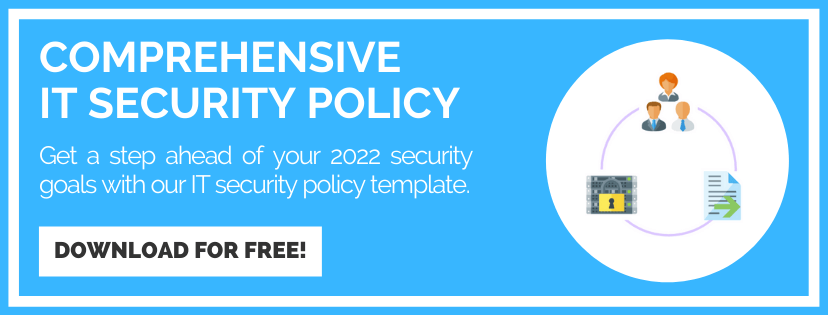How To Implement A Cyber Security Risk Management Plan
Step 1: Assess Cyber Security Risks
Start by conducting a security risk assessment.
Depending on your organizational requirements and objectives, choose the best approach, which can be quantitative, qualitative or a combination of both.
A quantitative approach gives you insight into the financial impact a particular risk brings, while a quantitative approach gives you visibility into the organizational impact in terms of productivity.
A risk assessment can be conducted at the strategic level or at the tactical level as described in the NIST Special Publication 800-30.
The first and foremost task in the security risk assessment process is to create an inventory of all assets and lay them out based on priority and importance and the nature of such information.
Get a buy-in from all stakeholders and come to an agreement on how to classify the informational assets.
Step 2: Prioritize Cyber Risks
Determine what data is accessible and to whom, and the ways it can be breached.
With the IT landscape widening and with organizations adopting newer technologies and different modes of conducting business such as shared infrastructure or third-party services running atop an existing software stack, data loopholes can live in the most unexpected territories.
In addition to the transforming landscape, a plethora of compliance policies coupled with regulatory practices reinforce the importance of identifying every possible security incident or data breach that can surface in the infrastructure web.
Once you’ve identified the informational assets and classified them, identify the potential threat channels.
As we maneuver along the dynamic threat landscape it’s important that we keep ourselves up-to-date on the triggers and controls and evolve to devise different strategies to counter these threats with the changing needs.
Data security incidents range from external attacks, malicious users and software, vulnerabilities introduced as a result of negligence, natural disasters, and insider threats.
Security breaches lead to revenue loss, reputational damage, legal implications, interruption of business continuity and the list goes on.
Identify network vulnerabilities through scanning, penetration testing, and auditing controls.
Vulnerabilities live on the network or the application and are weak spots that go unnoticed because of oversight and lack of agility to take note of system flaws.
With more and more companies hosting and running their applications on the cloud, the chances of introducing such weak spots are high.
The kind of threats that target such vulnerabilities are external, internal, structured, and unstructured threats.
Step 3: Identify Cyber Security Risk Prevention And Mitigation Strategies
Once you’ve assessed the information assets and have identified potential security threats associated with those assets, it’s time to devise mechanisms to avert the threats you’re likely to encounter.
Deploy Security Monitoring Tools
Deploy all necessary infrastructure and security solutions that can automate the surveillance for you. This is an essential step in managing your network’s security.
Think like an intruder and narrow down on the possible ways your IT infrastructure and assets can be attacked.
Tap into the weakness in your environment to detect vulnerabilities and devise a continuous security monitoring (CSM) strategy.
Deploy Security Information and Event Management (SIEM) tools that have User Entity and Behavior Analytics (UEBA) capabilities such that you can keep a track of evolving threat landscapes as well as secure your organization with regulatory compliance and reporting competence.
Create a cyber security mesh focused on securing the devices and nodes in your network.
Implement A Patching Program
Put in place a comprehensive patch management program for keeping all the software up-to-date and implementing patches as and when they’re available from respective vendors.
The patches address gaps within applications that could serve as a launchpad for attackers.
Enforce compliance from employees and push the updates automatically.
Prioritize updates based on the risk quotients and make sure they’re run on test systems to prevent unwarranted risks before the actual implementation.
Implement A Data Backup Solution
Data is one of the most valuable assets to an organization. It should be treated with utmost care and attention.
Make sure there’s a proven strategy to back up critical data within a secure environment and that which can be rolled back in the event of a corruption or system failure.
Automate the backup process and encrypt the backed-up data. For mission critical data, deploy a 3-2-1 backup strategy where you create 3 copies of the data using two different storage types and one being offsite.
Consider Staff Augmentation
You could choose to outsource your security needs to a trusted and managed security services provider who will take the responsibility of managing and securing your IT systems.
While doing so, make sure that they adhere to policies of security and compliance of system data.
With the proliferation of distributed networks and increased mobility of businesses, and decentralization, enhanced security measures have become the need of the hour.
Implement Security Based Technology
Cloud based enterprises are moving toward Firewall as a Service (FWaaS) that offers firewall as a cloud-based service giving you the flexibility to either partially or fully move the security enforcement to the cloud.
Software-defined wide-area-network (SD-WAN) is another solution for connecting distributed cloud providers into a single global firewall instance while you only need to worry about a single firewall entity to secure your assets.
Implement A Security Awareness Program
Despite all these measures, data can still be compromised if measures are not taken to create awareness about cyber security among the workforce.
Human error still figures among the top reasons for data breaches in 2021 and the figure continues to remain so.
It’s imperative to inculcate a culture of security awareness and hold employees accountable for non-compliance.
Simple tactics such as social engineering, phishing, authentication breaches and so on can be avoided if employees take cognizance of such symptoms and take appropriate remedies and route and report incidents through the security compliance channels.
